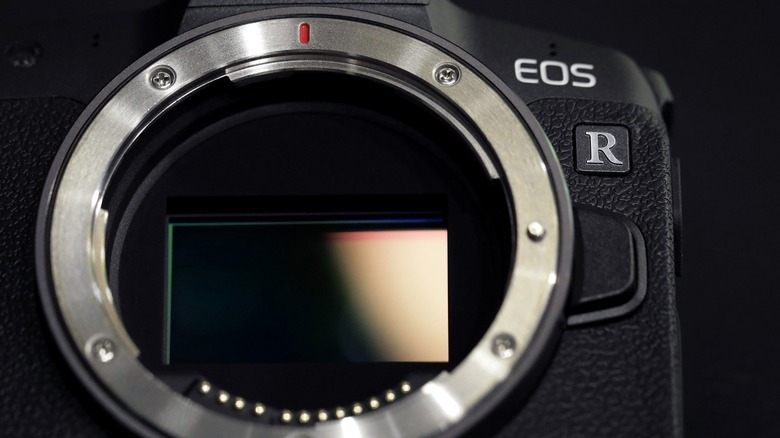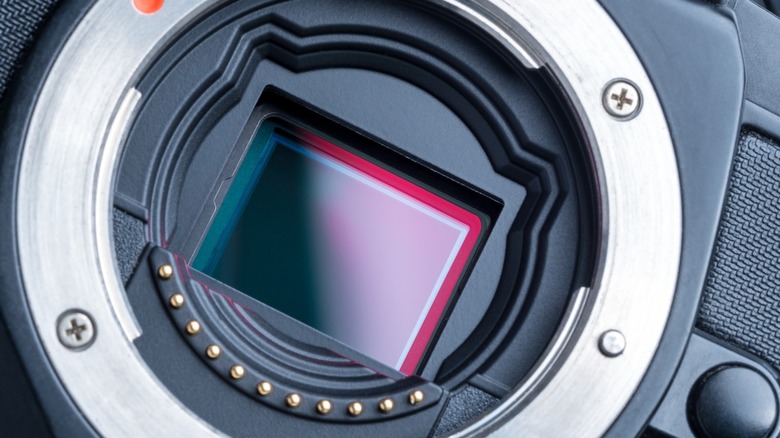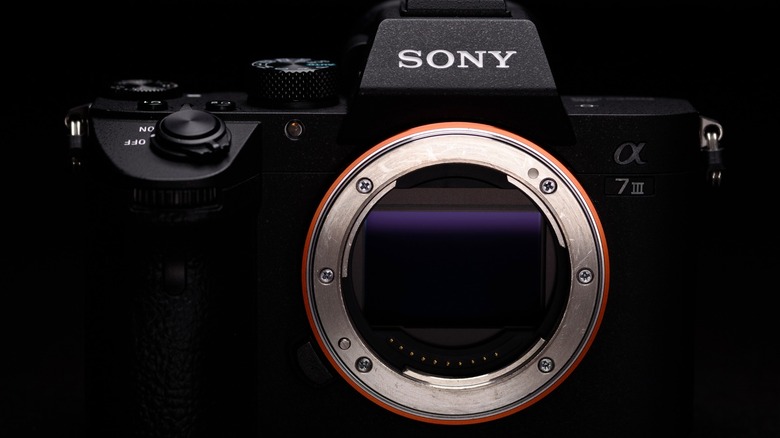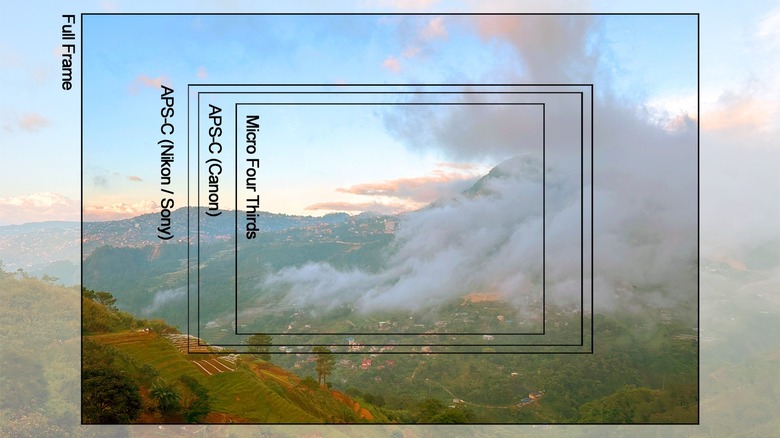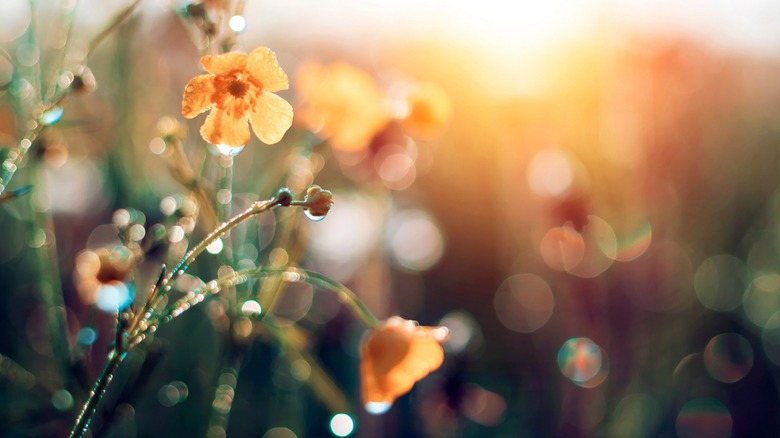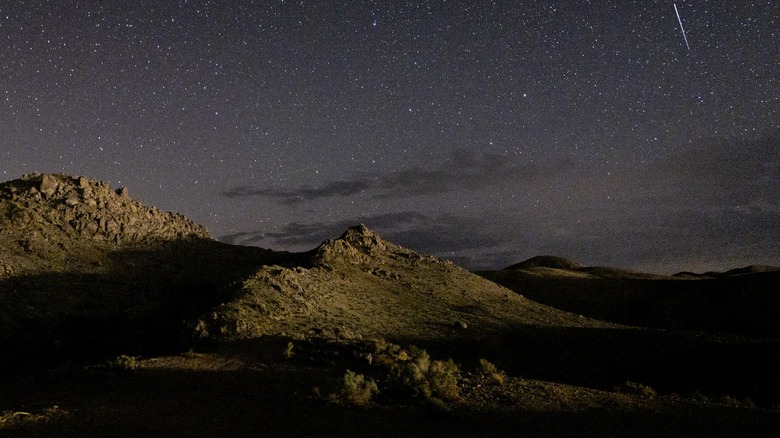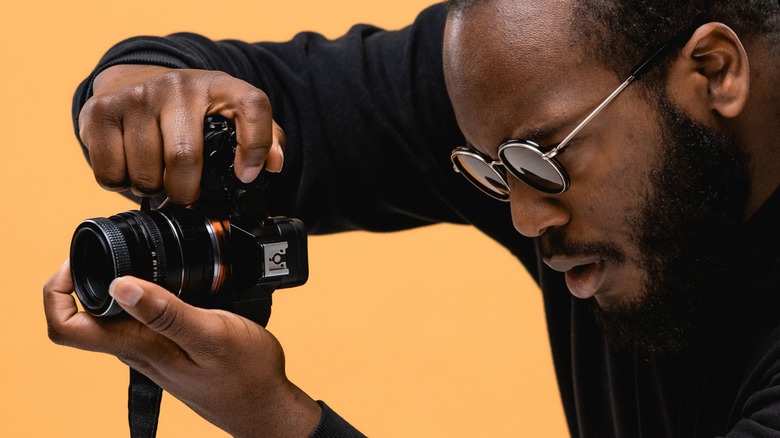What Is A Cropped-Sensor Camera, And How Is It Different From Full Frame?
We may receive a commission on purchases made from links.
When buying a camera for the first time and researching your options, you might've heard of cropped-sensor and full-frame cameras. This difference is usually highlighted as a split between affordable, entry-level cameras and expensive, high-end professional models.
If you're getting into photography for the first time, you probably won't notice this difference, as most beginner photographers prioritize price over other features. In fact, some don't recommend getting a full-frame camera for those who are just starting with photography or treat it as a simple hobby. But if you want to level up your craft or plan to go professional, a full-frame camera is something you should seriously consider.
What do these sensor sizes actually mean? Will a more expensive full-frame camera make you a better photographer? Let's compare the cropped sensor and full-frame camera and see how it affects your workflow, the kind of gear you can use, and the images you take.
What is a cropped-sensor camera?
The sensor is the digital camera's eye. Whether it's a $5,000 mirrorless camera, an iPhone 15 Pro Max, or a GoPro Hero12 Black, it has a camera sensor. A cropped-sensor camera refers to a camera with a sensor smaller than the standard size of a single film slide of a 35mm film — the most popular type used in old film cameras.
Because of their smaller size, cropped-sensor cameras are usually smaller and lighter. They also require a smaller battery, further reducing their weight. Because they use less material, they're also usually more affordable. That's why you'll find most entry-level and mid-range cameras featuring a cropped sensor.
There are many different cropped sensor types because camera manufacturers make their own standards. For example, Canon, Nikon, and Sony use APS-C sensors for cropped frame cameras. But Canon's APS-C sensor is marginally smaller than what Nikon and Sony use — 22.3x14.9 mm vs. 23.6x15.6 mm. Other camera makers, like Panasonic and Olympus, use an even smaller sensor size called Micro Four Thirds (or MFT) with a size of 17.3x13 mm.
What is a full-frame camera?
A full-frame camera uses sensors about the size of the traditional 35mm film camera, about 36x24 mm. That's why many photographers still consider full-frame cameras the gold standard for photography, as the images they produce maintain the quality and feel of film photography.
Although this makes full-frame cameras desirable for many, they also have several drawbacks, the biggest being their price. Because a full-frame sensor is physically bigger than cropped sensors, it's also usually more expensive. For example, the APS-C sensor Canon EOS R50 starts at just $629, while Canon's most affordable full-frame camera, the Canon EOS RP, starts at $999.
Another drawback with a full-frame camera is its weight, again dictated by the bigger sensor size. That's because the bigger sensor generally requires more power than its contemporary smaller-sized sensor. This usually leads to a bigger battery, a more robust power delivery system, a larger motherboard, and a heavier frame.
But aside from these physical differences, how does the cropped-sensor camera differ from the full-frame ones regarding photography?
Which camera offers a wider field of view?
The field of view is often the most significant difference when transitioning from a cropped-sensor camera to a full-frame one (or vice versa). Cropped-frame cameras have a narrower field of vision than their full-frame counterparts.
For example, the photo above shows the image a camera would capture depending on its sensor size. Even with the same lens focal length and position, a full-frame camera captures more of the view than an APS-C or MFT camera.
So, if you have a 50 mm lens attached to a Nikon camera with an APS-C sensor, it would look like you're using a 75 mm lens, as the cropped sensor zooms technically zooms the image you see to 1.5x magnification.
Nevertheless, a cropped sensor isn't automatically a disadvantage. Although it limits how wide you can see, especially if you want to use wide-angle lenses like 16-35mm or fish-eye lenses, the cropped sensor camera is an excellent option for those who are into long-range photography.
For example, sports photographers must stay behind in the stands, so a cropped-sensor camera will give them an advantage as it allows them to get closer to the action with a 180-600mm zoom lens (equivalent to around 270-900mm in APS-C cameras) than a similar full-frame camera could. It also extends the reach of wildlife and bird photographers, allowing them to take intimate images of wild creatures without disturbing them or putting the photographer in danger.
How does camera sensor size affect the depth of field of an image?
Another effect of sensor size is depth of field, or how much of your photograph is focused, depending on its distance from your camera lens. Larger camera sensors offer a shallower depth of field than cropped sensors.
Full-frame cameras have this effect because of their wider field of view, meaning you have to get in closer or use a larger focal length to fill the frame with your subject. This, in turn, affects your camera's depth of field, as the closer position or higher magnification gives a shallower depth of field.
This effect is perfect for those who want to create dramatic images with the subject popping clearly over the background. However, this could make things more difficult for macro or product photography, especially if you don't want to blur any detail on your subject or work in low-light conditions.
Are full-frame cameras better for low-light photography?
Many photographers prefer full-frame cameras if they frequently encounter low-light situations. The physically larger full-frame sensor reduces digital noise when using higher ISOs.
The first generation of digital cameras usually had terrible noise, especially when shooting at 400 ISO or above. This meant images were often soft and had color artifacts, so many photographers back then preferred to stay below it. However, this is often impossible, especially if you shoot in dim places and can't use a flash—like in churches and museums—or take long-exposure images, like in astrophotography.
Although camera technology has advanced so that noise is no longer a significant issue, even at high ISOs of 12800 or above, full-frame cameras still perform better than their cropped-frame counterparts. That's because the larger footprint of the former means there's less chance that the electrical signal from each pixel will interfere with signals from other pixels. This leads to an overall cleaner image when you compare a current full-frame sensor with its cropped-frame contemporaries.
Do you need a full-frame camera?
A full-frame camera does have several advantages over cropped-frame ones. However, it doesn't mean you need one to become a good photographer. Full-frame cameras offer technical advantages, but their most significant drawback is their price. If you're building your photography skills and have a limited budget, focus first on what you have and can afford.
Furthermore, even if you could buy a full-frame camera, investing first in lenses and other camera accessories is often more valuable than splurging your money on expensive full-frame camera bodies. Once you've mastered the gear you have, you should consider upgrading your cropped-sensor camera.
By doing so, you will appreciate the capabilities of the full-frame sensor, and you can further your photographic vision with this tool. But if you have an unlimited budget, jumping straight into a full-frame camera is also a good move, as you can ensure that your lenses (which you'll probably use for life) will work with it.
However, full-frame cameras are just that — tools for capturing what you have in your mind. They will not make you a better photographer if you do not build your photographic skills to begin with.
